First it is important to point out that the adults who play a role in the Troop organization are volunteers, financial managers, advisors, or as they like to call themselves, “Scouters.” Although occasionally referred to as such, they are not the Troop’s “Leaders.” The Leadership roles are reserved for the Youth who are elected or appointed to their positions of responsibility.
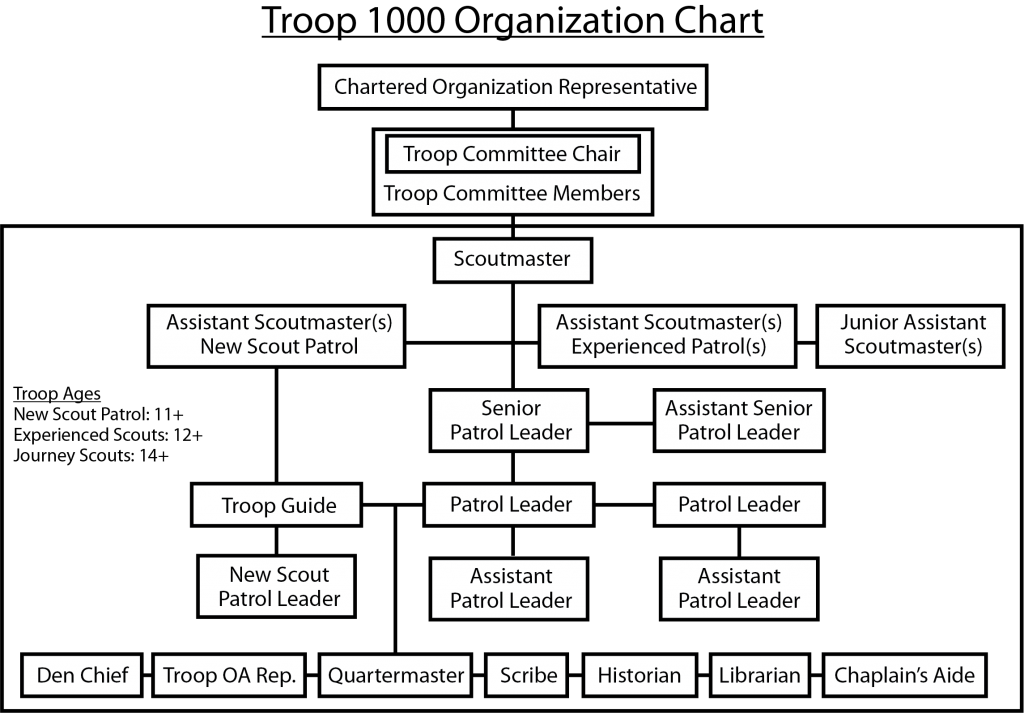
What this page covers:
- Troop Committee
- Troop Charter Organization Representative
- Troop Committee Chair
- Scoutmaster
- Assistant Scoutmasters
- Scout Patrols and the Patrol Method
- Junior Leader Positions
- Glossary
Troop Committee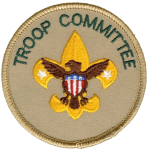
The Troop Committee is the Troop’s board of adult volunteers and supports the Troop program. Available committee members and the Scoutmaster attend the monthly committee meeting. The meeting is open to anyone interested in attending, but voting is reserved for committee members only. The Scoutmaster is not a member of the Troop Committee, and has no vote. The Committee Chair as well does not have a vote, unless a tie is reached. The committee’s primary responsibility is supporting the troop program.
The Troop Committee meets, generally on the first Thursday of each month, starting at 7:30 p.m. in the Chapel at Resurrection Lutheran Church. Meetings normally do not last longer than one and one-half hours. Please see the Troop calendar for the exact dates.
The Troop Committee, in general, supports the Scouting program by doing the following:
- Carries out the policies and regulations of the Boy Scouts of America.
- Serves on boards of review (for advancement) and courts of honor (for recognition).
- Serves in the various administrative roles necessary for the running of the troop.
The Committee is comprised of the following duties and positions: (note: some positions may have more than one person and some people may hold more than one position):
- Vice Chairperson
- Advancement Chair
- Secretary
- Treasurer
- Merit Badge Coordinator
- Camping Coordinator
- Adult Quartermaster
- Troop Fund Raising (bi-annual garage sale)
- Scout Fund Raising (Popcorn, Camp Cards, Greenery) Sales Coordinator
- Summer Camp Coordinator
- Adult Webmaster
- Membership and Recruiting Chair
- Adult Training Chair
- Communications /Newsletter Chair
- Chaplain
- Eagle Advisor
- Troop Hospitality Coordinator
- Clothing Closet Coordinator
- Scribe Coach
Membership in the troop committee is open to all parents and to others with an interest in the Scouting program. A completed Adult Leadership Application and proof of YPT is required for anyone that wishes to serve on committee.
Troop Charter Organization Representative
The Troop charter organization representative (COR) serves as the liaison between the chartering organization and the Troop Committee, updates the chartering organization with information about T1000, serves as a member of the District Committee, and is a voting member of Circle Ten Council.
![]()
Troop Committee Chair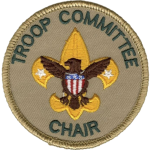
The Committee Chair oversees the committee and presides over the monthly troop committee meetings. The chair is also responsible for ensuring that quality adult leadership is recruited; advises the Scoutmaster on policies relating to Boy Scouting and the chartered organization; and supports the scoutmaster in working with individual boys and problems that may affect the overall unit program.
The Scoutmaster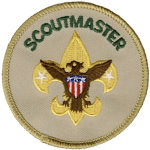
The Scoutmaster’s first responsibility is to train and guide the Patrol Leaders Council (the PLC) or, as we like to call it, the Greenbar (named after the bars on the Patrol Leaders Position Patch). He makes sure the Troop uses the methods of Scouting to achieve the mission and aims of Scouting.
The Scoutmaster helps the PLC make sure the annual plan, monthly, and weekly Troop programs and campouts meet our needs. He represents the Troop to the Troop Committee to make sure the PLC’s programs are supported. He councils Scouts, both formally (Scoutmasters Conferences) and informally as needed – including any counseling that may be needed due to difficulties or discipline issues.
He is also the official “approver” for all advancement – although in Troop 1000 he will generally delegate the “sign-off” for rank requirements to Patrol Leaders and, for swimming and safety related items, to Eagle Scouts, approved Instructors or others with specific training.
Assistant Scoutmasters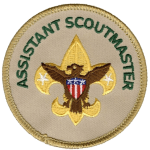
It would take reading the Scoutmaster Handbook for a parent to understand the SM’s various functions in the Troop – it often takes years to learn and understand them all! In a Troop as large and active as Troop 1000 the Scoutmaster is a pretty busy guy or gal. Fortunately, in Troop 1000 we have over a dozen adult Assistant Scoutmasters (ASM’s) to assist the SM in his duties. These ASMs comprise the Old Buffalo Patrol, or “Buffs” for short. The Scoutmaster is the Patrol Leader for the “Buffalo” patrol. This patrol functions similarly to a Scout Patrol, and sets the example for the Scout Patrols to follow.
Each Scout Patrol is assigned one or two ASM’s as Patrol Advisors. The Patrol Advisors are responsible for adult oversight of the patrols, and will work directly with the Patrol Leaders and Scouts on program elements and advancements. In addition, there are ASM’s who work on a general “at large” basis with the troop, or in specialized roles such as the “new Scout” coordinator. ASMs, and other adult volunteers take turns as Program Advisors, helping the Scout Patrols that are planning the programs to understand “what they don’t know they don’t know” – and filling in with specialized knowledge or specific experience to help Scouts make good programming choices and decisions.
While any interested and approved adult may become an ASM, ASM’s must attend Scoutmaster Position-Specific Training, which will provide Scoutmasters and ASMs with the basic information and tools they need to aid and build successful Boy Scout troops. They also must attend Introduction to Outdoor Leader Skills (IOLS), and Youth Protection Training (YPT) to be considered fully “trained” for this position. In addition, many take advanced training, including Wood Badge, an outstanding 21st Century management course that rivals some of the best business management training.
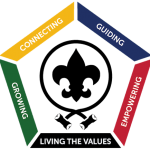 Wood Badge is a training course for Scouters (adults) which results in their receiving a certificate, a neckerchief, a leather slide, and two small wooden beads on a leather thong. Lord Baden-Powell, the founder of Scouting, directed the first course in 1919 and gave each of the participants one of the beads which he had captured from the African chieftain Dinizulu. Thus did the course name develop, for its symbol was literally a badge of wood.
Wood Badge is a training course for Scouters (adults) which results in their receiving a certificate, a neckerchief, a leather slide, and two small wooden beads on a leather thong. Lord Baden-Powell, the founder of Scouting, directed the first course in 1919 and gave each of the participants one of the beads which he had captured from the African chieftain Dinizulu. Thus did the course name develop, for its symbol was literally a badge of wood.
Wood Badge is, further, Scouting’s premier training course, designed so that Scouters could learn, in as practical a way possible, the skills and methods of Scouting. It is first and foremost, learning by doing. The members of the course are formed into patrols and these into a troop. The entire troop lives in the out-of-doors for several weekends (at Scout camps) or a week (at Philmont Scout Ranch), camping, cooking their own meals, and practicing Scout skills.
ASMs also provide the required two-deep leadership standards set by the Boy Scouts of America. Any ASM may be delegated a Scoutmaster’s task and may need to serve as Scoutmaster in the SM’s absence.
Scout Patrols and the Patrol Method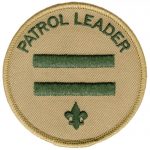
Upon joining Troop 1000 your Scout will be assigned to a Patrol. Patrols each contain eight or more active Scouts, and are the cornerstone of the Scouting program. The patrols are led by Patrol Leaders, who are elected by the Patrol on troop election nights for 6-month terms. Each Patrol Leader (PL) assigns the other leadership positions within his Patrol, which may include an Assistant Patrol Leader, Patrol Scribe, Patrol Quartermaster, Cheermaster and other positions as required.
In Troop 1000 Patrols are comprised of Scouts who are of mixed ages and ranks. One of the main purposes of Scouting is learning, and the ideal way is to have the older, more experienced, Scouts teach the younger, newer ones the requisite Scout skills. Part of the advancement process is demonstrating what you have learned to other Scouts and reinforcing that knowledge by teaching and testing others. Thus we have experienced Scouts reviewing the requirements with the newer Scouts and Patrol Leaders signing off many of the advancement requirements through First Class.
Each patrol is assigned one or more adult Assistant Scoutmasters (ASM) as a Patrol Advisor (PA) to coach the Patrol Leader, aid with advancement and generally help assure the success of the Patrol. The PAs attend and support Patrol meetings and activities as required. The PA is one of the keys to our organization and for that reason these roles are most often assigned to our more senior and experienced ASMs who train others who assist and learn to eventually take over this important responsibility.
Patrols function as cohesive units. They camp together, attend the meetings as a patrol, and hold one to three monthly patrol meetings at a Scout’s home. They also plan and attend fun and educational activities. They may also organize occasional campouts as a Patrol, without the rest of the Troop. These Scouts learn to work together, practice leadership skills and to rely on one another – much like group projects in school and the modern workplace.
Please understand that upon joining Troop 1000 your Scout may or may not be assigned to a patrol with all of his friends with whom he may have bridged from Webelos, or with friends from school, the neighborhood, etc. Patrols are assigned after consultation with Scouts and their families but are at the discretion of the Senior Patrol Leader and Scoutmaster. While efforts will be made to accommodate placement requests when joining, placement is dependent on many factors, including balancing the patrols with regard to the number of Scouts in each, and distribution of age and skill levels.
These Patrols become like fraternities – a lifelong association with continuous membership, rituals, and slogans that continue and evolve even after the Scouts graduate from the program. Each Patrol’s traditions tend to remain recognizable enough that a returning or visiting Scout can always feel like a member of this group. While transfers between patrols are possible, it is unusual barring significant circumstances.
Working out reasonable behavior issues as the youth mature or recognizing and accepting differences among the Scouts is an important part of the Scouting program and is encouraged and aided rather than avoided by separation (if possible). However, any continued behavior that negatively impacts another Scout’s ability to enjoy and benefit from the Scouting program will not be tolerated and may be reason for removal from a Patrol or the Troop.
Occasionally experienced Scouts may agree to Patrol changes to help balance the age and experience levels of the Patrols.
Junior Leader Positions
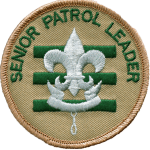 Senior Patrol Leader (SPL): is the top junior leader in the troop. He leads the Patrol Leaders’ Council, in consultation with the Scoutmaster, appoints other junior leaders, and assigns specific responsibilities as needed. Troop members elect the Senior Patrol Leader for a six-month term.
Senior Patrol Leader (SPL): is the top junior leader in the troop. He leads the Patrol Leaders’ Council, in consultation with the Scoutmaster, appoints other junior leaders, and assigns specific responsibilities as needed. Troop members elect the Senior Patrol Leader for a six-month term.![]()
![]()
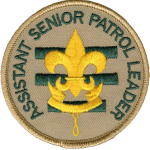 Assistant Senior Patrol Leaders (ASPL): fills in for Senior Patrol Leader in his absence. He also is responsible for training and providing direction to the other junior leaders. These ASPLs (generally two to four in any election cycle) may have specific responsibilities based on their individual experience, such as advising and aiding the Troop Quartermaster or Scribe, in addition to their general duties.
Assistant Senior Patrol Leaders (ASPL): fills in for Senior Patrol Leader in his absence. He also is responsible for training and providing direction to the other junior leaders. These ASPLs (generally two to four in any election cycle) may have specific responsibilities based on their individual experience, such as advising and aiding the Troop Quartermaster or Scribe, in addition to their general duties.
![]()
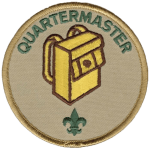 Quartermaster (QM): is responsible for Troop supplies and equipment. Works closely with the Troop Committee Quartermaster to be sure the Troop has and maintains all the camping and program equipment and supplies needed.
Quartermaster (QM): is responsible for Troop supplies and equipment. Works closely with the Troop Committee Quartermaster to be sure the Troop has and maintains all the camping and program equipment and supplies needed.
![]()
![]()
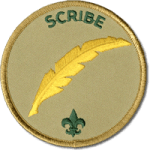
Scribe: is the Troop secretary and treasurer. Maintains attendance records and collects dues and campout money from the Scouts.
![]()
![]()
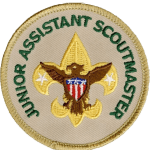 Junior Assistant Scoutmaster (JASM): usually an Eagle Scout, age 16 or 17, who supervises and supports other youth leaders as assigned. May be assigned to the Old Buffalo Patrol, but will be treated as a youth for all other purposes.
Junior Assistant Scoutmaster (JASM): usually an Eagle Scout, age 16 or 17, who supervises and supports other youth leaders as assigned. May be assigned to the Old Buffalo Patrol, but will be treated as a youth for all other purposes.
![]()
![]()
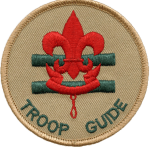 Troop Guide (TG): advisor and guide for new Scouts advancement and activities. They are the designated trainers for Trail to First Class.
Troop Guide (TG): advisor and guide for new Scouts advancement and activities. They are the designated trainers for Trail to First Class.
![]()
![]()
 Patrol Leader (PL): gives leadership to members of his patrol and represents them on the Patrol Leader’s Council (Greenbar).
Patrol Leader (PL): gives leadership to members of his patrol and represents them on the Patrol Leader’s Council (Greenbar).
![]()
![]()
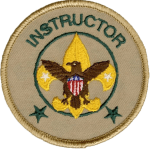 Instructor: A trained or certified youth who teaches one or more sets of advancement or activity skills to Troop members. Their specialized knowledge may be First Aid, Climbing, Swimming, or another generally safety related skill set.
Instructor: A trained or certified youth who teaches one or more sets of advancement or activity skills to Troop members. Their specialized knowledge may be First Aid, Climbing, Swimming, or another generally safety related skill set.
![]()
![]()
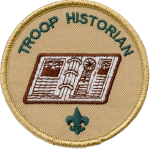 Troop Historian: collects and maintains Troop memorabilia and information on former Troop members who achieve Eagle rank. Works with the Troop Webmaster and others to maintain real or virtual “scrapbooks” and photo albums from various Troop activities.
Troop Historian: collects and maintains Troop memorabilia and information on former Troop members who achieve Eagle rank. Works with the Troop Webmaster and others to maintain real or virtual “scrapbooks” and photo albums from various Troop activities.
![]()
![]()
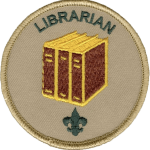 Librarian: keeps troop’s books, pamphlets, magazines, and audiovisuals for the Troop. (May not be considered a Leadership Position for rank advancement without Scoutmaster approval).
Librarian: keeps troop’s books, pamphlets, magazines, and audiovisuals for the Troop. (May not be considered a Leadership Position for rank advancement without Scoutmaster approval).
![]()
![]()
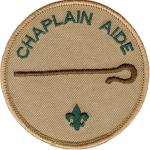 Chaplain’s Aide (CA): plans and assists in troop non-sectarian religious services and promotes BSA religious emblems programs. Works with the Adult Troop Chaplain.
Chaplain’s Aide (CA): plans and assists in troop non-sectarian religious services and promotes BSA religious emblems programs. Works with the Adult Troop Chaplain.
![]()
![]()
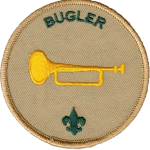 Bugler: plays the bugle at Troop meetings and campouts.
Bugler: plays the bugle at Troop meetings and campouts.
![]()
![]()
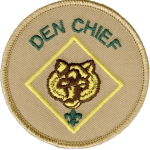 Den Chief (DC): works with a Cub Scout den as a guide and activities assistant.
Den Chief (DC): works with a Cub Scout den as a guide and activities assistant.
![]()
![]()
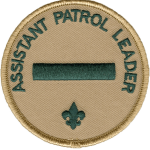 Assistant Patrol Leader (APL): fills in for the Patrol Leader in his absence. Is generally not a member of the PLC unless he also has one of the above positions.
Assistant Patrol Leader (APL): fills in for the Patrol Leader in his absence. Is generally not a member of the PLC unless he also has one of the above positions.
![]()
![]()
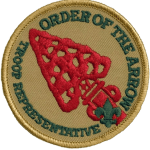 Order of the Arrow Troop Representative: Represents the Troop OA members at the monthly OA meeting and informs the Troop about OA functions and activities.
Order of the Arrow Troop Representative: Represents the Troop OA members at the monthly OA meeting and informs the Troop about OA functions and activities.
Glossary
- ALT: Adult Leader Training
- APA: Assistant Patrol Advisor
- APL: Assistant Patrol Leader
- ASM: Assistant ScoutMaster
- ASPL: Assistant Senior Patrol Leader
- CC: Camp Constantin (Graford, TX)
- CFAST: Community First Aid Specific Training
- CRJ: Camp James Ray (Pottsville, TX)
- COH: Court of Honor
- GMNP: Guadalupe Mountain National Park
- Greenbar: Named after the bars on the PL’s patch, only Scouts with Troop or Patrol Leadership positions meet the Monday following a campout.
- HHH: Hickory Hills Hideway (LaRue, TX)
- IIT: Instructor In Training
- LNT: Leave No Trace
- LST: Leader-specific Training
- MA: Monthly Advisor
- MB: Merit Badge
- OA: Order of the Arrow
- One Grand Scout: Award given to a Scout at the Court of Honor as selected by the SM and ASMs.
- One Grand Scouter: Award given to a Scouter (adult volunteer) at the Court of Honor as selected by the Patrol Leaders.
- One Grand Patrol: Award given to the Patrol who has scored highest via meeting attendance, campout attendance, and rank advancement.
- OLS: Outdoor Leader Specific
- PA: Patrol Advisor
- PL: Patrol Leader
- PLC: Patrol Leaders’ Council also known as Greenbar. The PLC — not adult advisors — are responsible for planning and conducting the Troop’s activities.
- QM: Quarter Master
- Scouter: Adult volunteer.
- SB: ScoutBook is Scout management software.
- SM: ScoutMaster
- SPL: Senior Patrol Leader
- TRB: Thorns, Roses, and Buds: An exercise the Scouts do after every campout in which they discuss what went wrong or was frustrating, what was great, and what was OK but could be improved.
- TRJ: Camp Trevor Rees-Jones (Athens, TX)
- TG: Troop Guide
- TLT: Troop Leader Training
- WB: Wood Badge
